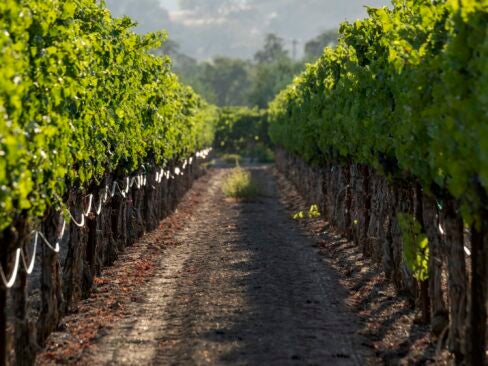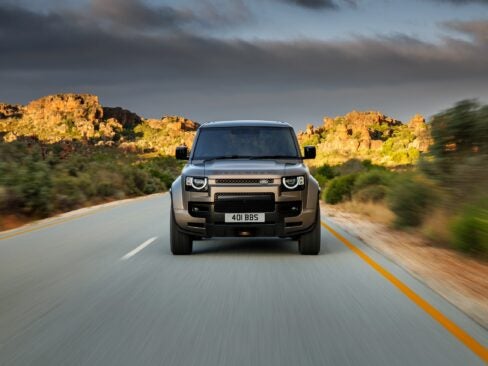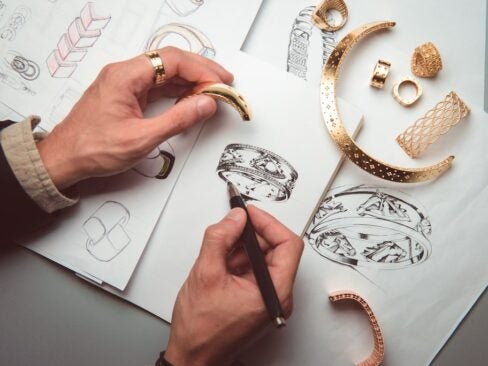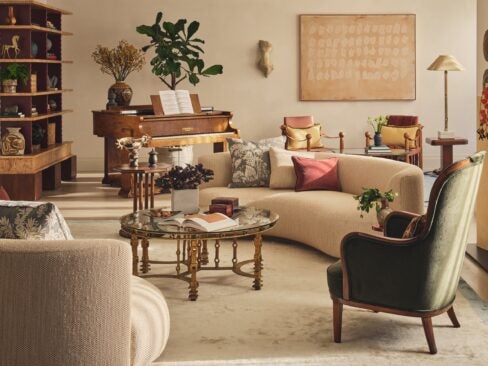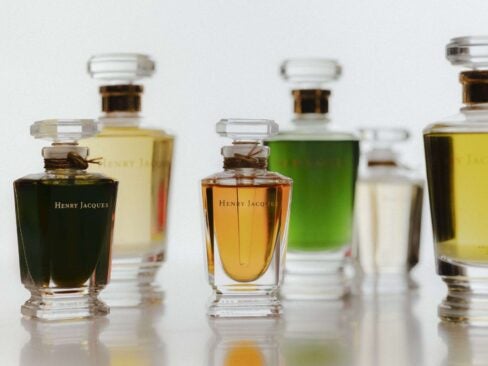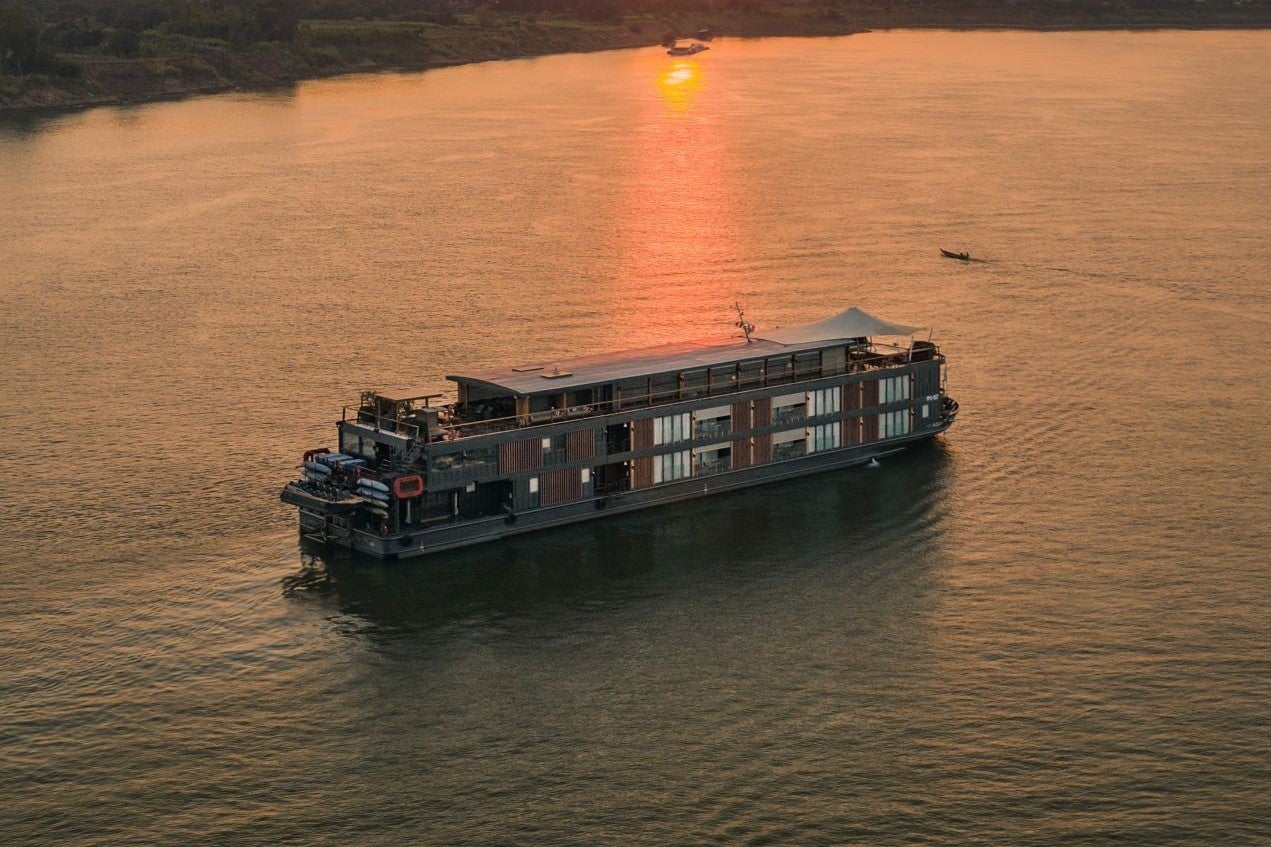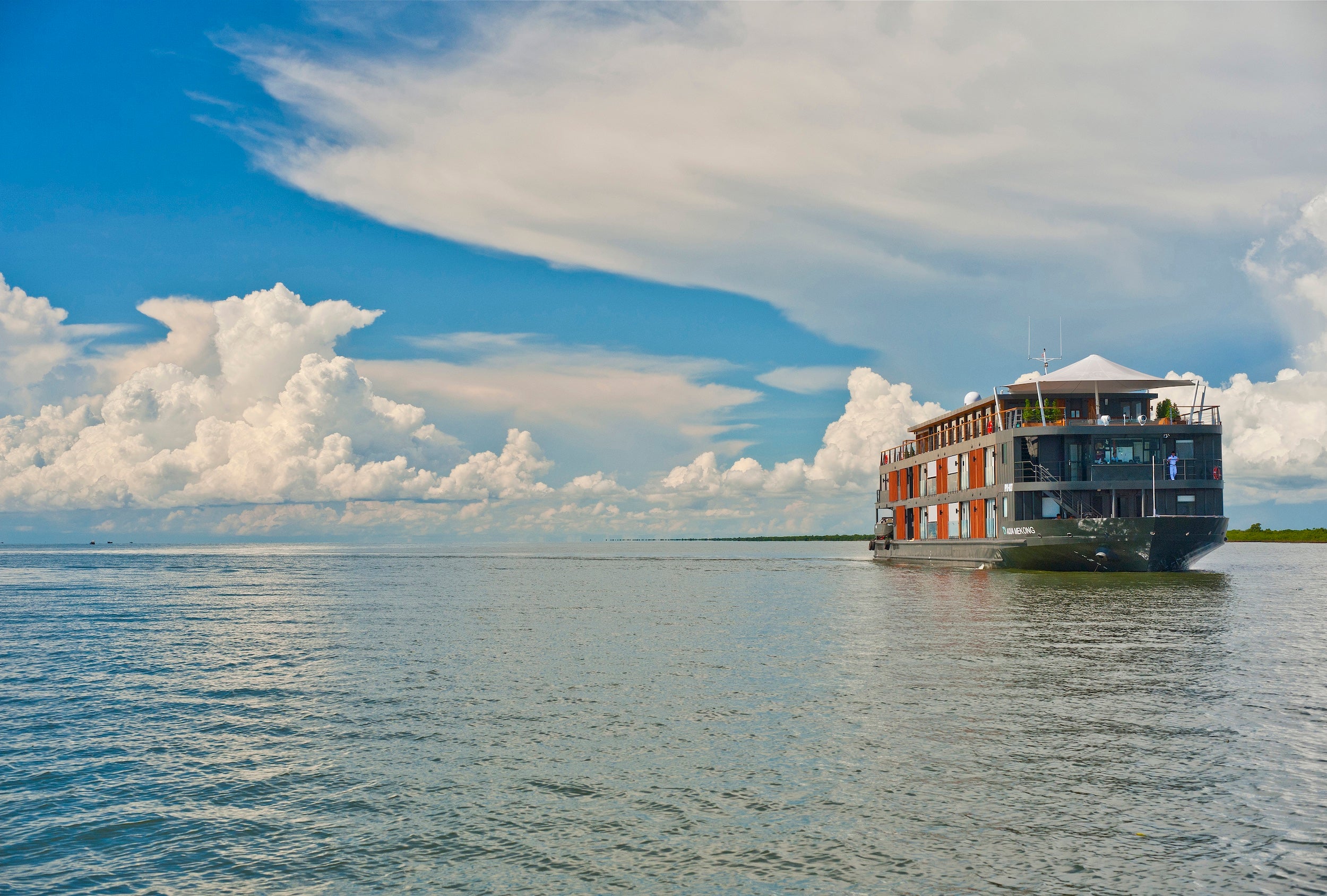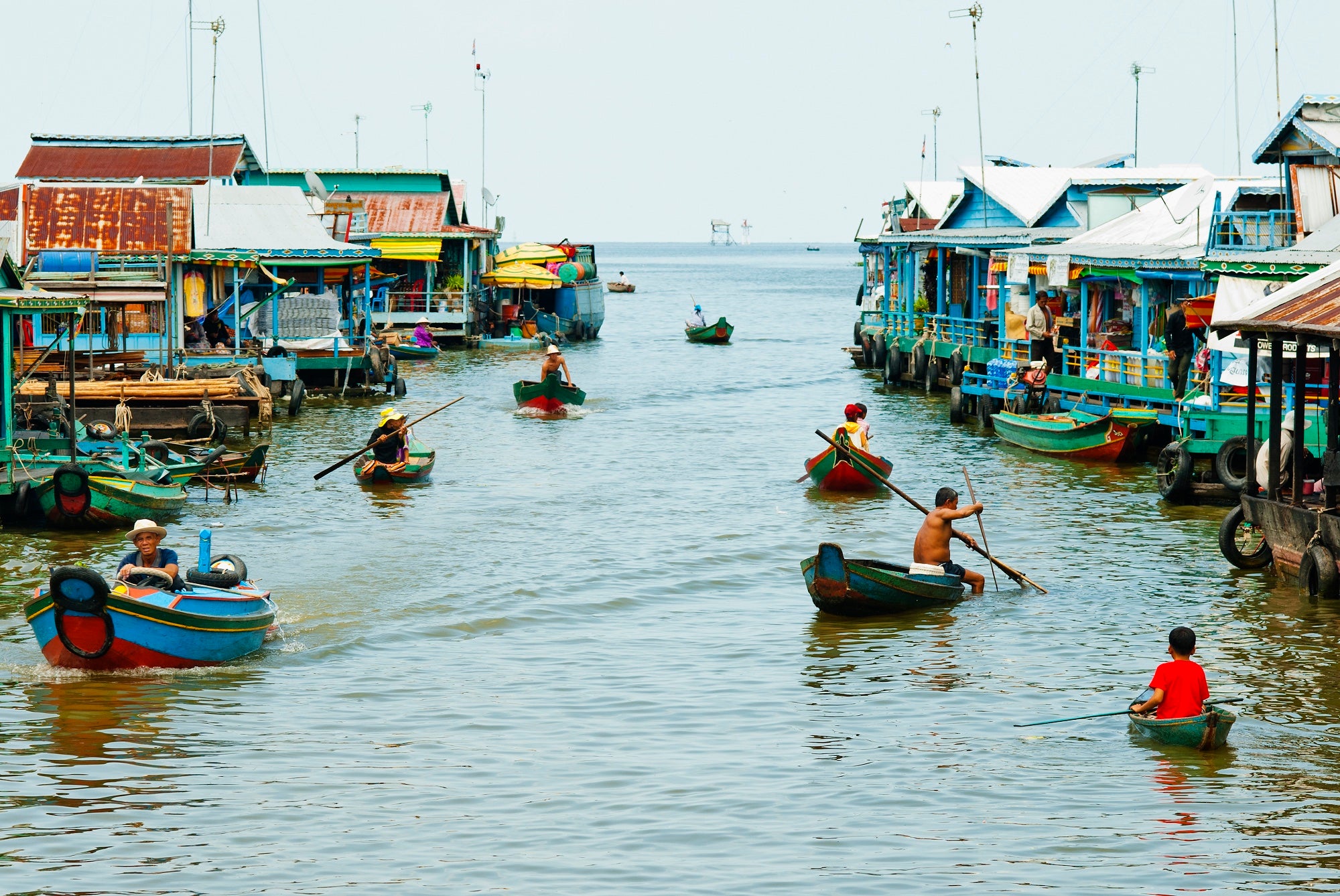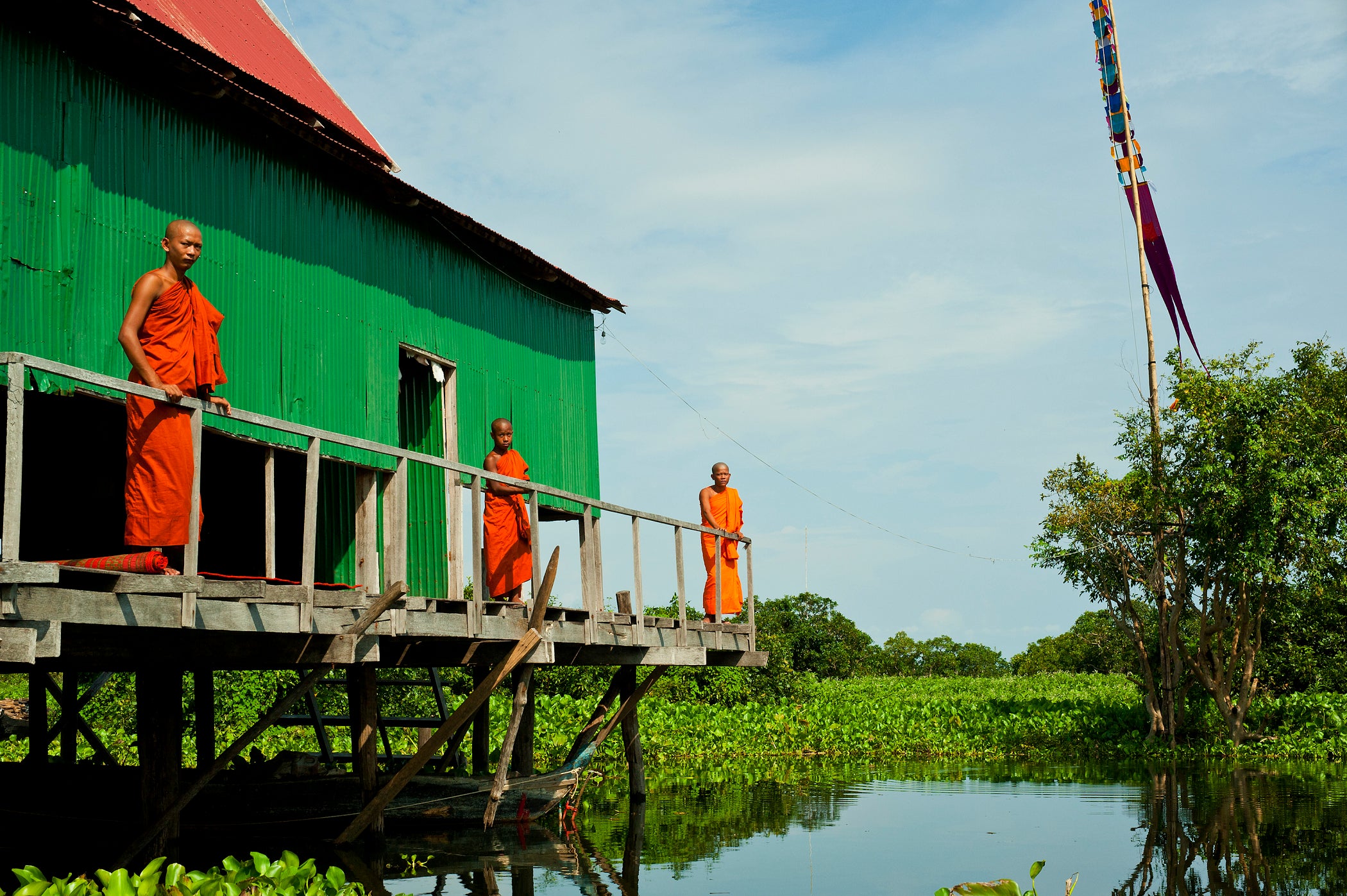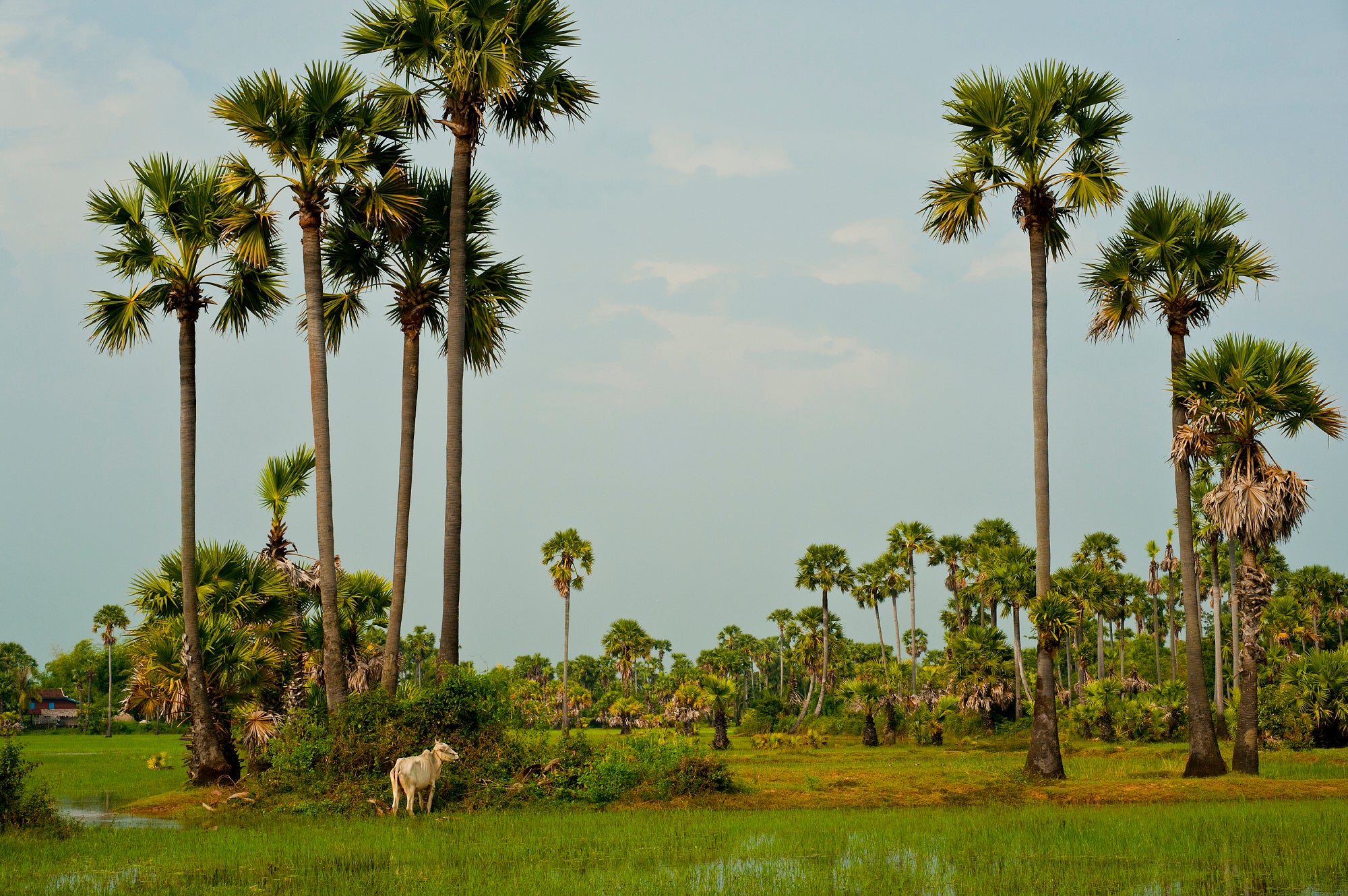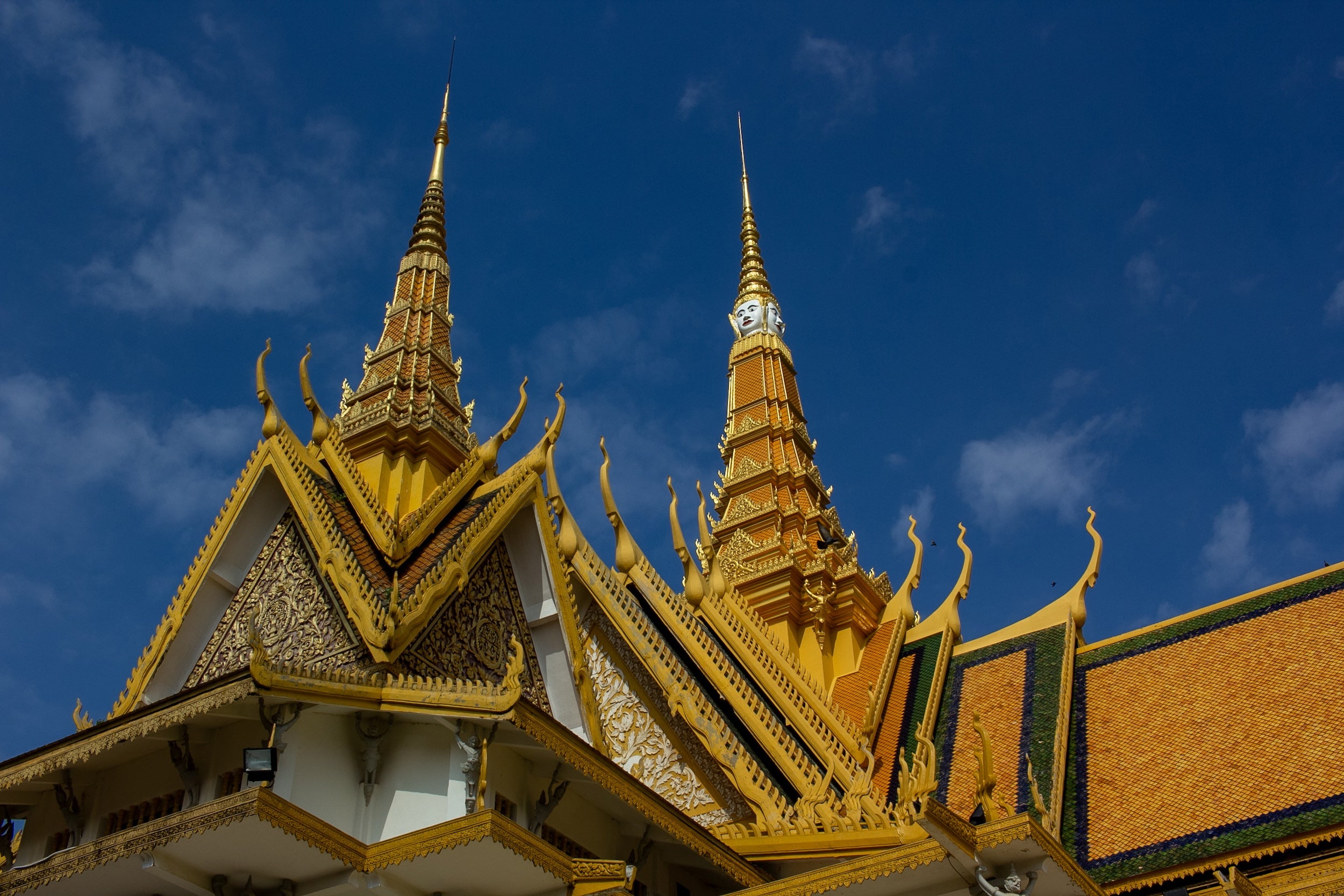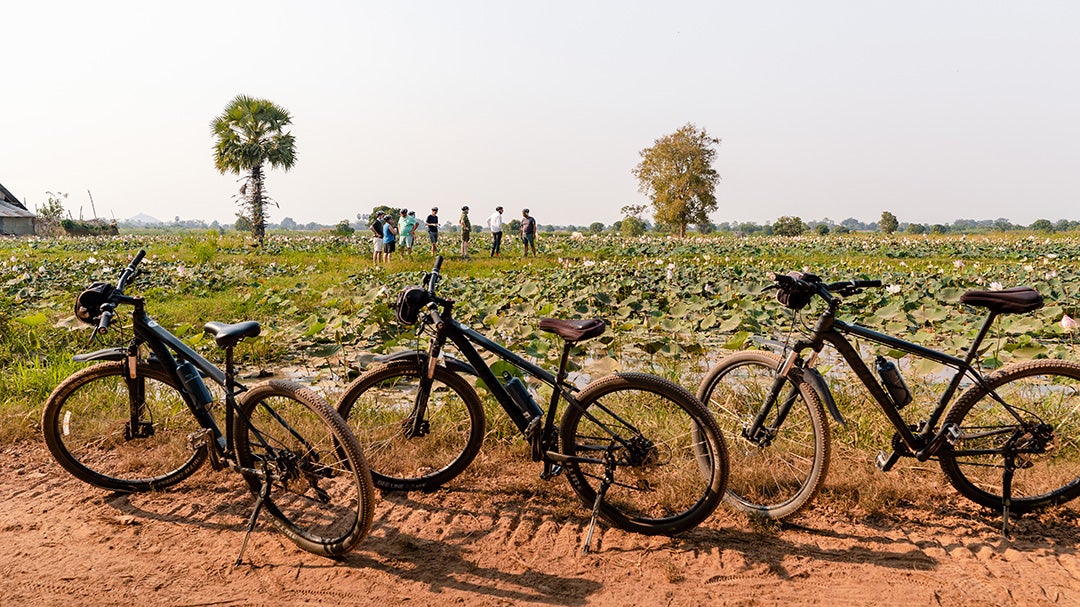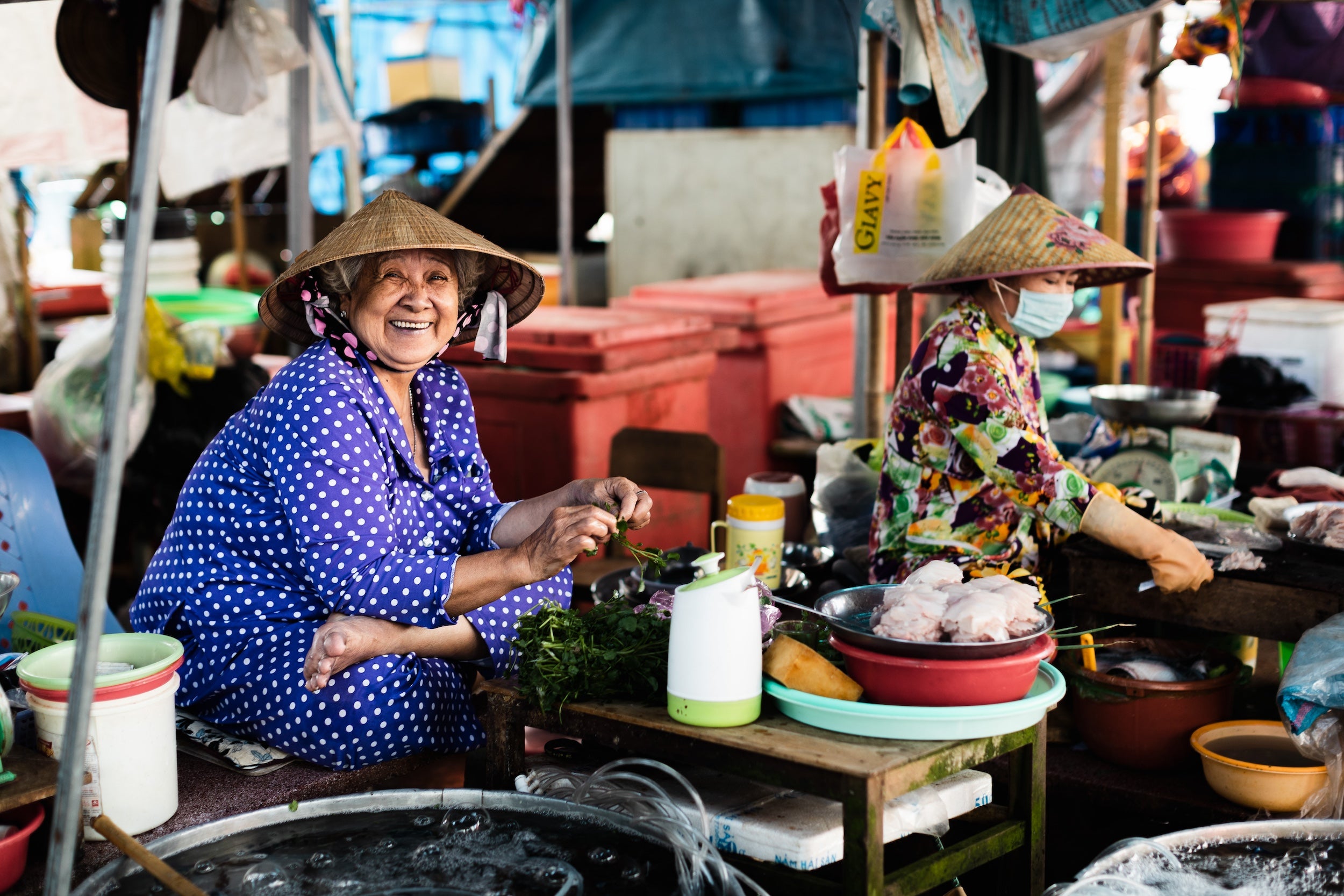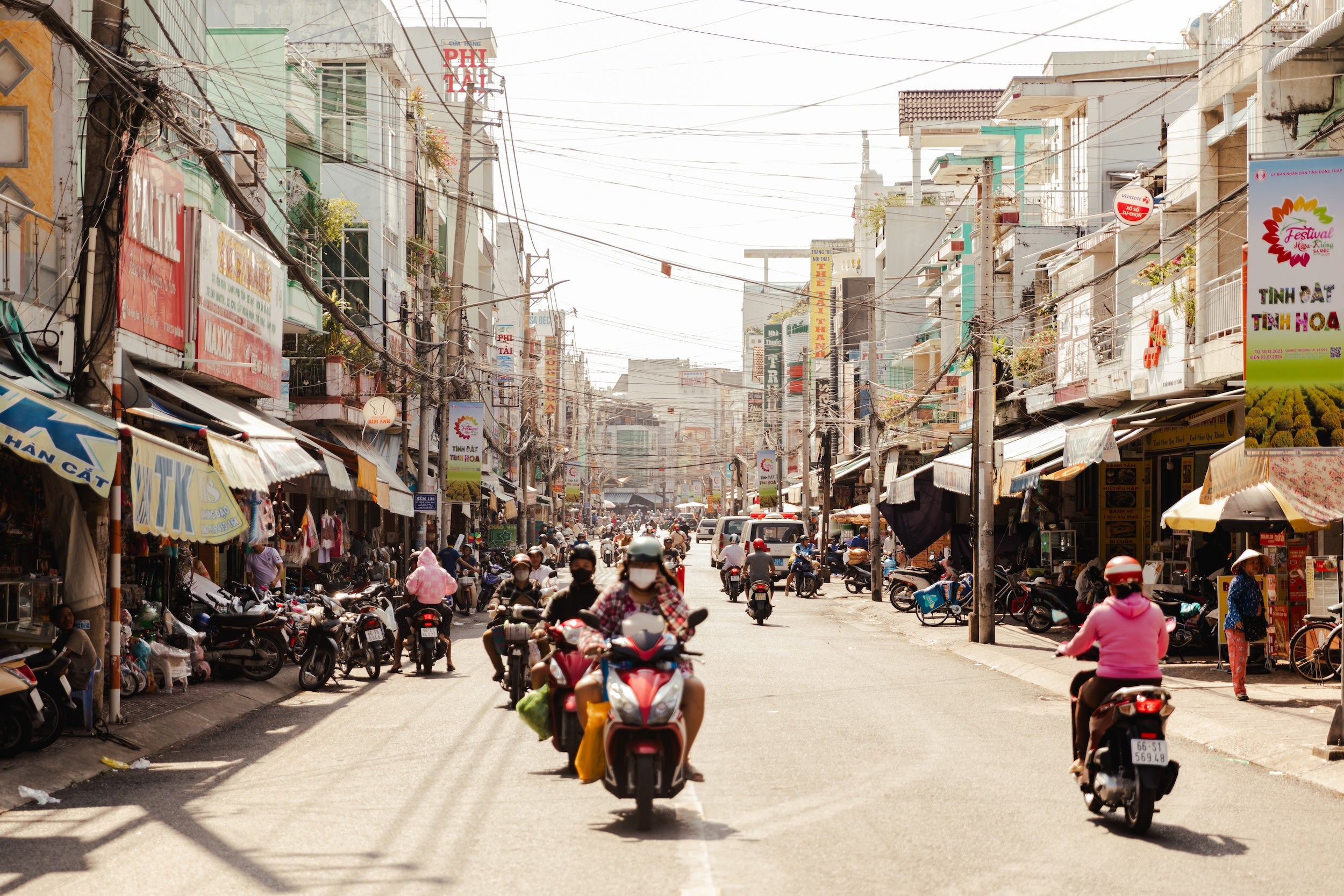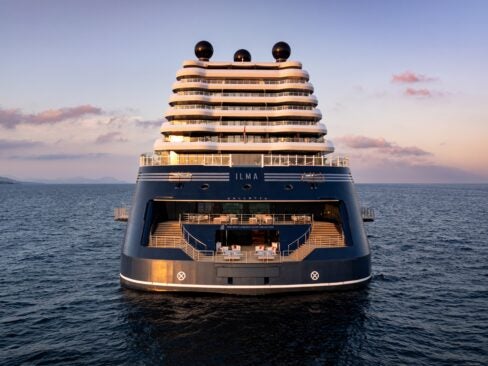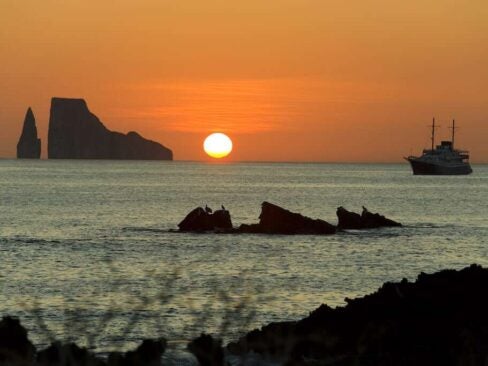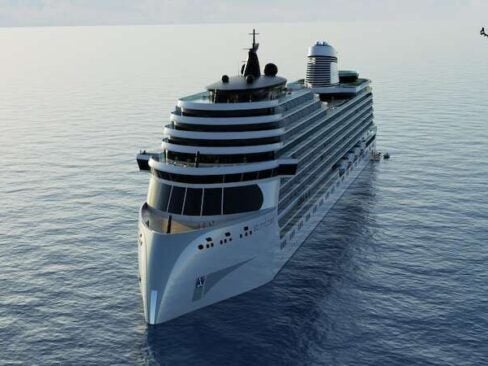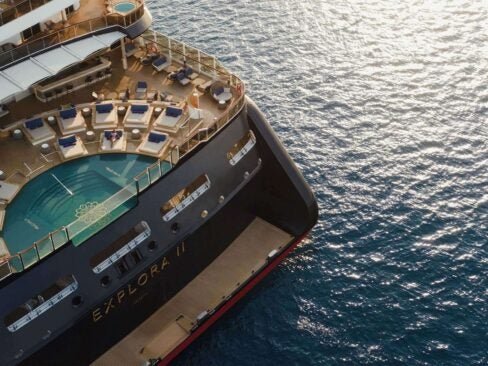In southern Cambodia and Vietnam, the waterways are more than a way of life — they are life itself. The Mekong is the second-largest river delta in the world — beaten only by the Ganges — and is considered the breadbasket, or rather rice bowl, of Vietnam.
In Cambodia and Vietnam, the fertile soil combined with the network of canals ensures multiple rice harvests a year, and so the region has thrived. The importance of these bodies of water can’t be overstated, and a trip to this corner of the world should certainly be on any budding traveler’s radar.
However, it’s not quite that simple. While it’s the water that makes this region so unique, it also makes getting around far from a walk in the park. Hotels remain few and far between, particularly if you value an elevated level of luxury, and the lack of tourists to this region ensures the language barrier remains a constant hurdle.
But there are solutions. Aqua Expeditions began traversing the world’s remote waterways with its trips along the Amazon in 2007. In October 2014, the company launched Aqua Mekong, a purpose-built vessel designed to make exploring this part of the world possible. With a capacity of only 40 guests, there’s a one-to-one guest-to-crew ratio, ensuring service across the vessel’s three decks remains on par with some of the finest hotels anywhere in the world.
-
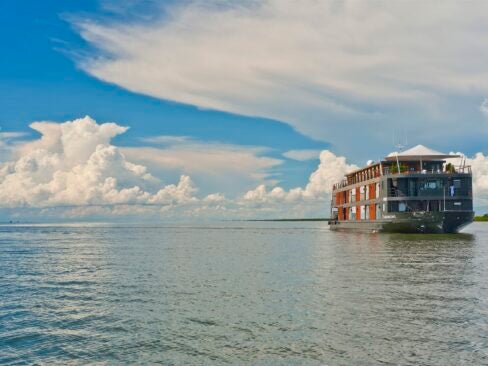
Day One
Krong Siem Reap, Cambodia
The first day of the trip is centered around boarding Aqua Mekong, the impressive vessel where I’ll be spending much of the next eight days. Thanks to Angkor Wat, visitors to this corner of Cambodia are not short of luxury options: Park Hyatt Siem Reap (our meeting point), Raffles Grand Hotel d’Angkor and Anantara Angkor Resort and Spa, in addition to a host of private villa options, mean luxurious stays are plentiful.
From the Park Hyatt we take a short bus ride to the dock, where we board a series of skiffs that take everyone to Aqua Mekong. Over the next few days, we get well acquainted with these skiffs. Most stops are exceptionally remote and lack the infrastructure to dock a large vessel, so the skiffs are essential for getting travelers to and from Aqua Mekong at each stop.
The evening is spent settling into the ship. A speedy and efficient safety briefing is followed by one of the numerous delicious meals we will enjoy over the course of the next week.
-
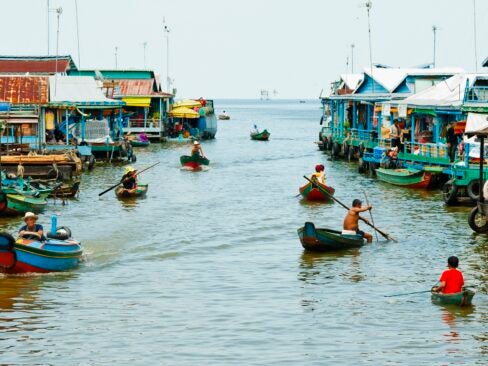
Day Two
Tonlé Sap, Cambodia
The first true day of the trip begins early. Tonlé Sap is the largest freshwater lake in Southeast Asia, supports over three million people and is home to one of the most diverse ecosystems in the world. Part of the lake is designated as the 22,000-hectare Prek Toal Core Bird Reserve, so we take to the skiffs before dawn to spy the birds while they are still half asleep.
The drivers open up the throttle, and soon we are skipping along the water and heading into a mangrove. As the deep orange sun begins to rise out of the flat water in the distance, it’s impossible not to picture scenes from countless movies. This image is enhanced when we are met by several men in full camouflage — rangers tasked with protecting the reserve and ensuring rules are followed by local fishermen.
This reserve is one of the last refuges for large water birds like the spot-billed pelican, milky stork and black-headed ibis. With the help of rangers — who spend several weeks at a time living in tree huts while they are on duty — we spot countless species.
-
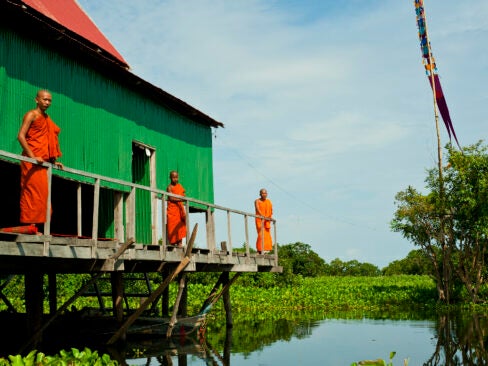
Day Three
Tonlé Sap, Cambodia
Tonlé Sap is a truly unique part of the world. The vast shallow lake has an average depth of only around three feet and is dotted by numerous villages where the inhabitants spend much of their time on boats or in floating dwellings.
Day three is spent exploring these incredible floating hamlets. In Phat Sandai, floating houses line each side of a canal. We meet with the individuals in charge of daily life in the village, including a gentleman who is effectively the local mayor, and another in charge of security. This proves a superb opportunity for questions to better understand the ins and outs of floating village life.
These experiences define a trip like ours on the Aqua Mekong. Access to local communities, thanks to the ship’s expert guides, helps to offer new perspectives. In the afternoon we say goodbye to Tonlé Sap and head down the Mekong; the vast lake transitions into a wide river — the hectic artery that connects southern Cambodia and Vietnam.
-
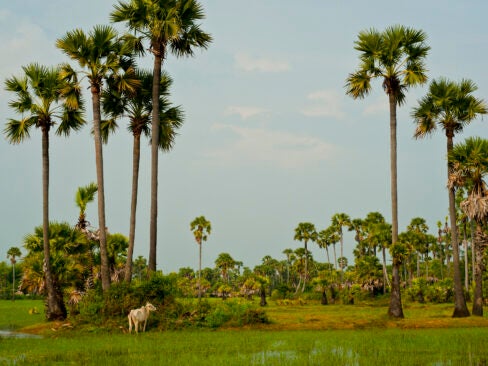
Day Four
Oudong, Cambodia
Heading down the Mekong we edge closer to Cambodia’s metropolis of Phnom Penh. Cambodia’s capital is on the verge of total transformation, much like Dubai of the late ’90s. Skyscrapers dot the waterfront, many in a state of half-construction, and most funded by extensive Chinese investment.
Before we arrive in Phnom Penh, we call in at a village that’s highly regarded for its silversmithing. Here, workers pass on traditional craftsmanship, working in shops akin to Aladdin’s cave, bursting with shiny trinkets that range from small silver souvenirs to large ornamental statement pieces.
Next, we head to Oudong, once regarded as Cambodia’s capital. Today, visitors flock to Oudong Mountain, which is home to numerous impressive temples and stupas. The most impressive of these stupas sits atop the mountain and is well worth seeing, although the 500 steps that lead to the summit certainly make you work for the view, particularly in the humid Cambodian heat.
The afternoon is spent either walking or taking the ship’s bicycles out for a ride. On most days, guests have the opportunity to ride the bikes, and they prove to be an excellent way to explore the Cambodian countryside.
-
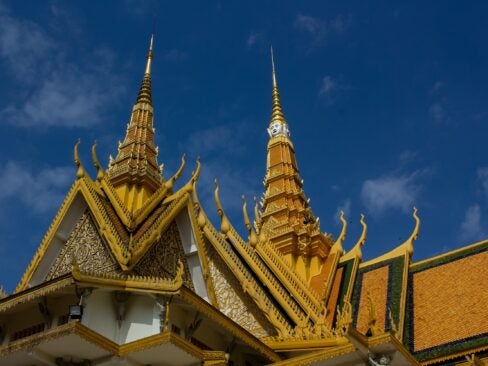
Day Five
Phnom Penh, Cambodia
Today is all about the Cambodian capital, with travelers given a lot of flexibility regarding how they spend their time here. The Royal Palace and Silver Pagoda sit at the center of Phnom Penh and are unmissable; intricate gold roofs ensure the palace shines like a beacon to Cambodia’s architectural achievements.
From here the group divides, with travelers heading to either the National Museum, a large market or the Tuol Sleng Genocide Museum.
Tuol Sleng — once known as S-21 — has been left particularly raw. Visitors walk through cell blocks where thousands were held captive and tortured by the Khmer Rouge regime. It’s an intense experience — not least because it is situated in the center of the city; however, it is a truly revealing experience to picture what life was like in Cambodia during this nation’s darkest days.
-
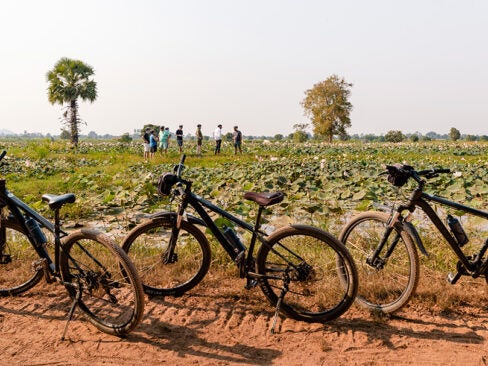
Day Six
My An Hung, Vietnam
Dawn breaks as the ship crosses the Vietnamese border. One of the guides signals breakfast is ready with a call of “Good morning, Vietnam!” via the PA system. Until this point much of the food served on the boat has been Cambodian-inspired, but today our arrival in Vietnam is marked with a hearty bowl of pho.
We take a skiff to Long Khanh Island, close to the border town of Chau Doc, which we explore on bikes, visiting a few local craftspeople and traders along the route. As we cycle along the smooth roads the occasional moped whizzes past, some with up to four people on board.
In the evening, we stop by the Mekong Delta village of My An Hung, where we tuck into a selection of Vietnamese delicacies, sip a cocktail and watch a unicorn dance. This involves performers in dragon and lion costumes throwing each other into the air as they leap onto raised platforms.
-
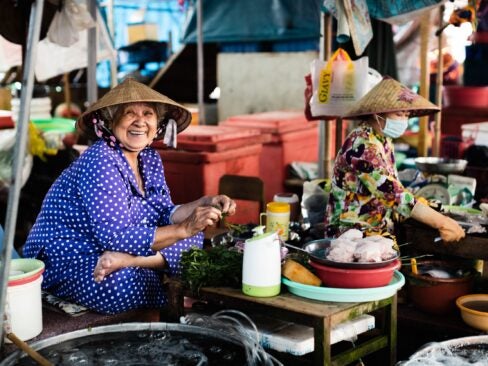
Day Seven
Sa Dec, Vietnam
Strolling around the local food markets in the small Mekong city of Sa Dec — alongside the ship’s head chef as he picks up a few extra supplies — offers an authentic view of life in the Delta. Locals barter down the price of the daily catch, and at times things can get a little overwhelming, as every sense is dialed up to 11. These markets are not for the squeamish.
Tranquility is restored after we head further down the river and board a local sampan to visit Tan Phong Island. Here, fruit grows in abundance with many of the villagers growing their own produce. It makes the perfect opportunity to try a piece of durian, an infamous Southeast Asian fruit that tastes considerably better than it smells.
-
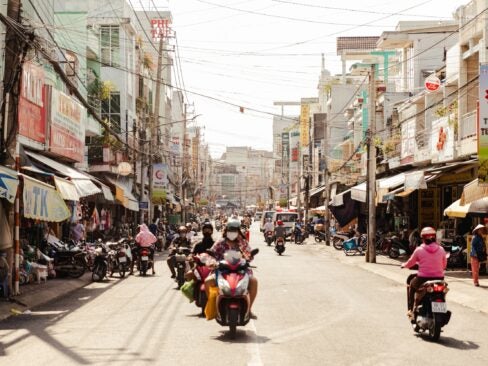
Day Eight
My Tho, Vietnam
Early in the morning of the final day, Aqua Mekong pulls into the dock at her final destination, the city of My Tho. From here, it’s an hour-and-a-half ride to Vietnam’s vast southern metropolis, Ho Chi Minh City, home to around 10 million people. The ride poses the ideal opportunity to reflect on the previous seven days.
From Cambodia’s vast Tonlé Sap Lake to the countless canals, tributaries and multi-lane, highway-like stretches of the Mekong Delta, this is a region that constantly hums with activity, its sights, sounds, smells and tastes taking on a unique character unlike anywhere else in the world. It’s a landscape that remains raw, having changed little for hundreds of years, barring the introduction of motorboats that now surge up and down the rivers at breakneck speed. This rawness is a double-edged sword: It’s what makes the region so intriguing for visitors, but also such a challenge to travel. Unless, of course, you have a spot booked on Aqua Mekong.
Aqua Mekong
From $9,870 for seven nights.
Contact: Shearly Loilewen, guest relations coordinator, +62 853 3881 9530. aquaexpeditions.com
